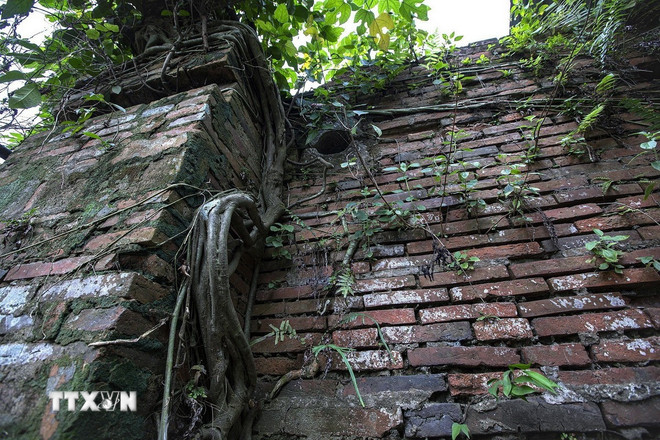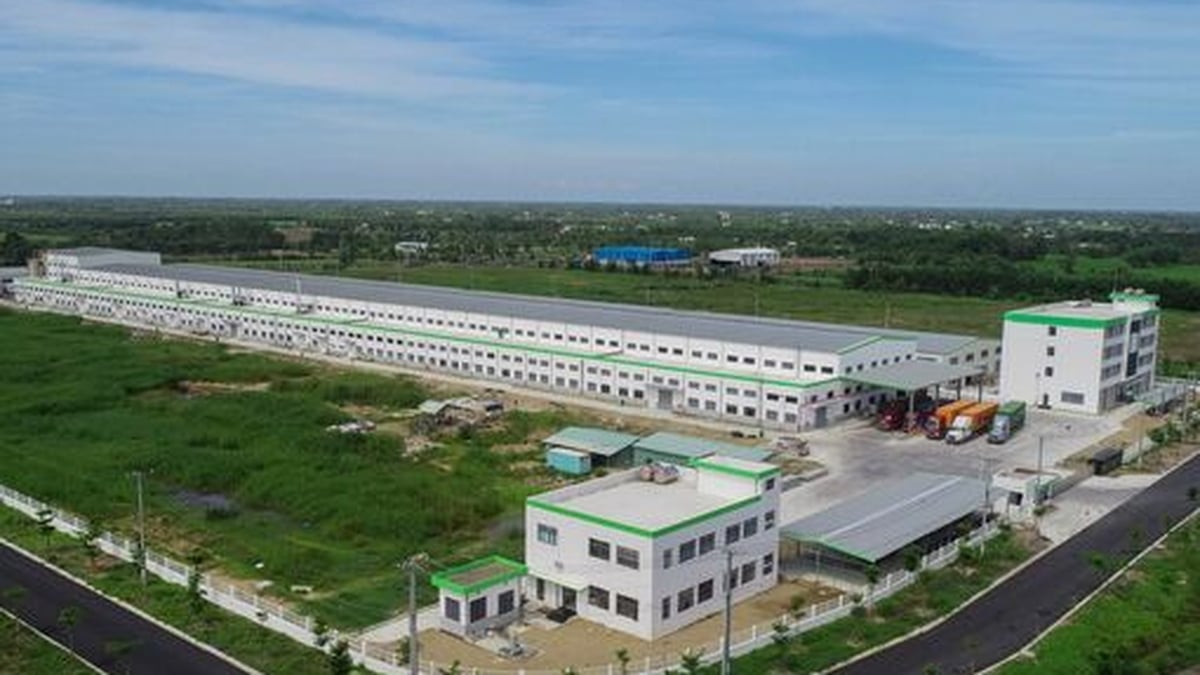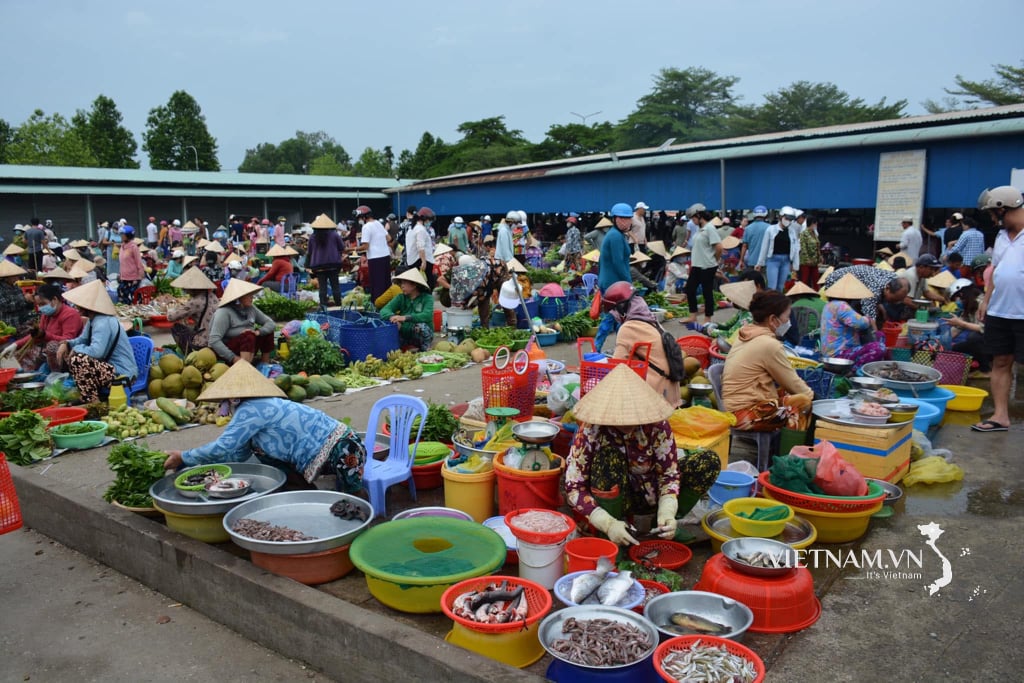In Ba Lam hamlet, Cao Duong commune, Phu Tho , the mysterious ancient citadel gates have long been called by word of mouth by the people as “Mac Dynasty Citadel”. However, up to now, there has been no authentic archaeological evidence about the date or when the “Mac Dynasty Citadel” gate was built?
Traces in everyday life
According to the observations of VNA reporters, the “Mac Dynasty Citadel” (as the people of Ba Lam hamlet call it) only has the relatively intact west gate, with an arched roof with different layers built of octagonal bricks. The south gate only has traces of the wall and two gate pillars.
Inside the arches of the two gates, there are square stones with round holes. According to the elders here, the square stones with holes could have been used to install bolts to lock the gates. The two eastern and northern gates no longer exist, and very little remains of the laterite walls remain.
Mr. Tran Van Luong, a resident of Ba Lam hamlet, said that while digging the ground to build auxiliary structures and plant fruit trees in the ancient citadel area, along the northern gate, he discovered a flat layer of laterite under the deep soil. According to Mr. Luong, this could be the foundation of an ancient architectural work.
Mrs. Bui Thi Yen (92 years old) from Ba Lam hamlet recalls: “When I was a child, in the ancient citadel area there were traces of several large houses paved with bluestone. However, later, the stone foundations were removed, and people took the stone back to build.”
According to many people in Ba Lam hamlet, people farming in the ancient citadel area have dug up many ceramic items such as bowls, plates, jars, pots... In particular, there are earthenware jars containing a thick liquid like molasses.
On the northern side of the ancient citadel area, there is also a square stone block, in the middle of which is a smooth, raised round pillar. This is most likely a remaining pillar base from ancient architectural works that once existed inside the citadel.

Need to verify the history of the name "Mac Dynasty Citadel"
The name “Mac Dynasty Citadel” has been used by the people of Ba Lam hamlet, Cao Duong commune, Phu Tho province for many generations. However, there is currently no evidence or historical documents proving that this ancient citadel is related to the Mac Dynasty.
In 1995, the ancient citadel area was inventoried by the former Hoa Binh Provincial Museum and listed as a relic under the name “Mac Dynasty Citadel,” based solely on folk tales. In 1998, the People’s Committee of the former Hoa Binh Province issued a decision to protect the relic and proposed to rank it as a national relic. However, the Ministry of Culture, Sports and Tourism has not yet recognized it due to a lack of relevant historical documents.
Mr. Le Quoc Khanh, former Deputy Director of the former Hoa Binh Provincial Museum, said that no historical documents or records have been found about the “Mac Dynasty Citadel” relic site in Cao Duong commune. The current name “Mac Dynasty Citadel” is the name of the local people, with no scientific basis.”
Faced with a site of local archaeological value at risk of being lost, Mr. Bui Huu Dien, Chairman of the People's Committee of Cao Duong Commune, said: In the coming time, the Cao Duong Commune Government will request the Vietnam Institute of Archaeology to conduct excavation research to clarify the age and historical origin of the relic "Mac Dynasty Citadel."
To date, “Citadel of the Mac Dynasty” in Cao Duong Commune, Phu Tho Province remains a mysterious and gradually fading place. Many houses and orchards have been built by the people of Ba Lam Hamlet, Cao Duong Commune within the area, destroying the remaining traces of this place.
The remaining vestiges and stories that people have kept orally for many generations are valuable documents, suggesting a historical period that needs to be studied and preserved. The excavation and research will not only contribute to clarifying the origin of the place name "Citadel of the Mac Dynasty" but also help preserve part of the cultural heritage of the land of Cao Duong commune, Hoa Binh, now Phu Tho province./.
Source: https://www.vietnamplus.vn/phu-tho-can-xac-minh-lich-su-ten-goi-thanh-nha-mac-o-xa-cao-duong-post1052753.vnp

























































![[VIDEO] 5 years a term – Testing the power of political belief.](https://vphoto.vietnam.vn/thumb/402x226/vietnam/resource/IMAGE/2025/7/31/80f3cf00b5224fcc8eb4f07754be2233)










































Comment (0)